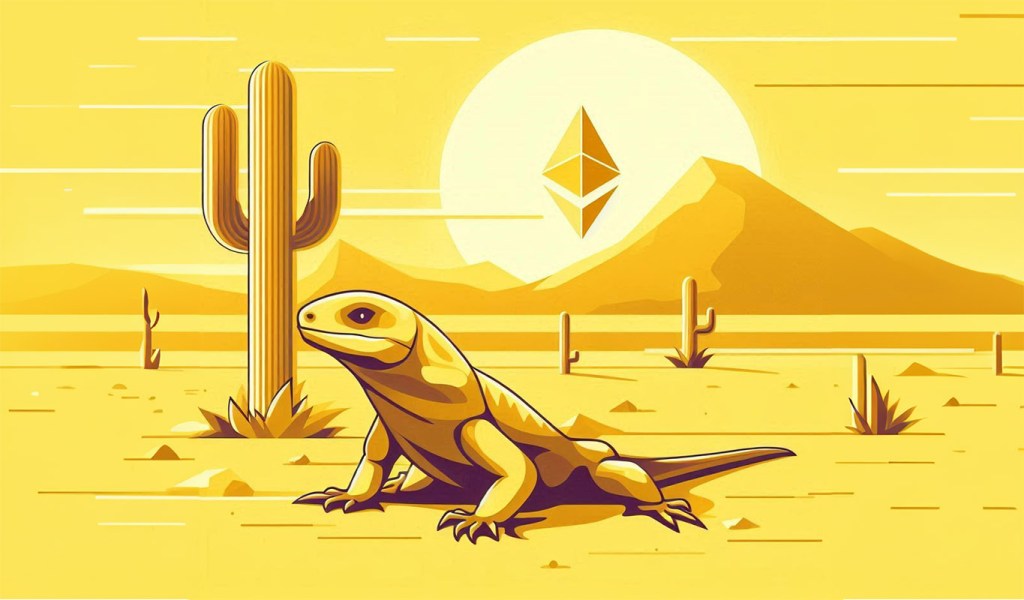
A crypto project that raised 820,000 Ethereum in a 2016 initial coin offering (ICO) recently sold millions of dollars worth of ETH on a handful of exchanges, according to the digital asset tracker Lookonchain. Golem Network (GLM) is an open-source platform that aims to enable decentralized access to computing power. Lookonchain notes the project raised […]
The post 2016 ICO Project That Raised 820,000 Ethereum Sells $72,000,000 Worth of ETH on Crypto Exchanges: Lookonchain appeared first on The Daily Hodl.

Tron (TRX) founder Justin Sun is offering a 5% white hat bounty to the hacker who exploited the exchange Poloniex for $125 million in crypto. Sun, who acquired Poloniex in 2019, says that the hacker has a week to accept the offer and return the assets to the wallets he took them from, otherwise, law […]
The post Tron Founder Justin Sun Offers 5% Cut to Hacker After Poloniex Crypto Exchange Loses $125,000,000 in Cyber Heist appeared first on The Daily Hodl.

Top US crypto exchange Coinbase is launching full retail support for a quartet of low-cap altcoins. Aioz Network (AIOZ), Golem (GLM), Highstreet (HIGH) and Synapse (SYN) are now live on Coinbase.com and the exchange’s mobile apps, according to a new tweet from the company. Coinbase Pro listed the four assets earlier this week along with […]
The post Coinbase Lists Four Additional Altcoins for Full Retail Support As Crypto Markets Stumble appeared first on The Daily Hodl.

Mining Ethereum on a home PC can be done, but profits will be few and far between.
The Golem Network has launched an app that allows users to mine Ethereum on their laptops, but it could be a long time before riches can be reaped.
The decentralized computing resources sharing platform released the Thorg app that allows users to mine Ethereum on Windows-based PCs and laptops.
The app runs in the background and harnesses unused computing power to process the calculations required for proof-of-working mining. Users are rewarded in Golem’s native GLM token however, and not Ethereum.
The system runs on layer-two aggregator Polygon which alleviates any heavy transaction fees associated with the ERC-20 GLM token. It creates “shares” which are batched computing tasks that are collected and used to mine Ethereum.
Golem CEO, Piotr Janiuk, said that Thorg was designed to increase adoption of the Golem Network by allowing users to earn passive income on their own computers.
The minimum requirements for running the app are the Windows 10 operating system, and a 6 Gigabyte or greater graphics card, which only high-end gaming laptops will have.
Those thinking that this could be an easy way to make a mint by mining at home may have to think again. A 6GB graphics card will produce a hash rate of around 26 MH/s according to review websites. Taking this and average desktop PC power consumption of around 600 watts into consideration for a hypothetical example, profits from mining Ethereum on a PC could yield around $0.06 per day, or take more than a fortnight to make $1, according to mining calculators.
There are many variables, however, such as the specific computer hardware, power consumption, and cost of electricity, so this is just one theoretical example and results may vary.
Related: ETH mining still highly profitable despite upcoming Eth2 upgrade
The calculations also do not account for the cost of high-end graphics cards, which are extremely expensive at the moment due to the demand and global chip shortage. The announcement did state that a high-end GPU was not necessary for all users.
“In case you don’t have a high-end GPU, you can still use the Golem Network to compute tasks and earn GLM.”
At the time of writing, Golem’s native token was trading down 1.5% on the day at $0.475 according to CoinGecko. GLM is currently down 64% from its $1.32 all-time high in April 2018.

According to the project team, it is approaching the 10th generation with roughly 1 billion molecules formed.
The decentralized computing power-sharing network Golem has partnered with software firm Allchemy for a program exploring the origins of life on Earth.
The program, called LIFE@Golem, harnesses Golem’s computing power in an attempt to recreate billions of chemical reactions and molecular bonds to trace how the first forms of life could have started on the planet. Working with Allchemy — no apparent connection to blockchain developer Alchemy — Golem’s infrastructure makes it possible to simulate far greater numbers of molecules.
“Although research in this arena is decades-old, it has never been conducted on similar scales, boosted by a state-of-the-art computerized synthesis engine deployed on a global platform such as Golem,” said the project. “The algorithm will be tracing synthetic pathways that could have enabled primitive metabolism and self-replication.”
The overwhelming majority of scientists tend to agree that following the bonding of amino acids to create the first proteins in Earth’s primordial soup, some of the first organisms were thought to be microbes dwelling in the ocean near hydrothermal vents, possibly more than 3.4 billion years ago. LIFE@Golem’s algorithm, implemented on Golem’s infrastructure, assumes a starting point of nine types of molecules — purportedly including ammonia, water, nitrogen, methane, hydrogen cyanide and hydrogen sulfide — present somewhere in the primordial ocean and applies plausible reaction rules to determine how long and under what conditions early life may have formed.
According to the project team, it is approaching the 10th generation with roughly 1 billion molecules formed. Golem’s community node operators make the computations behind such a large number of chemical reactions and conditions possible.
“The project demonstrates to the blockchain community that reputable life-sciences partners such as Allchemy see practical potential in Golem and can prove it by utilizing the protocol,” said Golem Factory founder and CEO Piotr Janiuk. “It lays down a framework (or process) to interconnect scientific facilities to the protocol — almost on demand.”
Related: Biological evolution should inform how humans design markets
Blockchain firms have previously partnered with scientific companies to simulate chemical reactions and model molecular structures. In the early stages of the pandemic last year, Bitfury contributed to distributed computing endeavor Folding@Home to better understand the structure of the virus causing COVID-19.